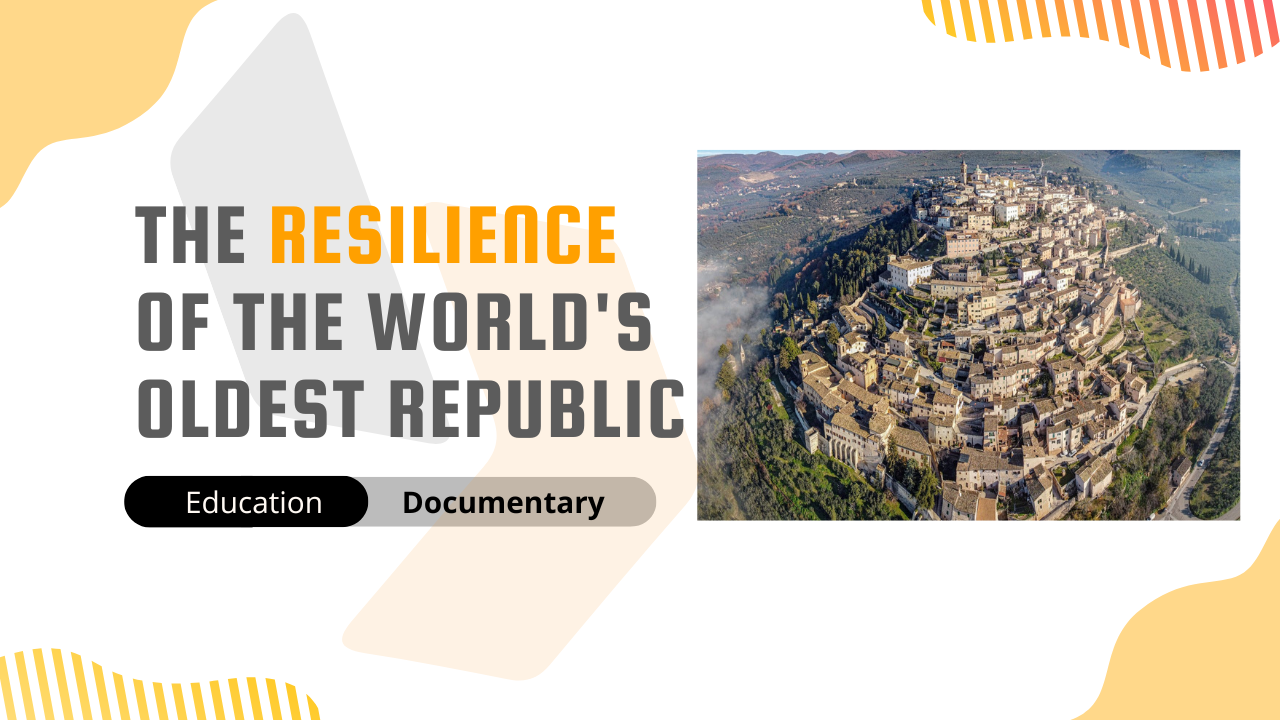
San Marino, a tiny enclave nestled in the northern part of Italy, stands as a testament to resilience and independence. Founded in 301 AD, it proudly claims the title of the oldest republic in the world. But what is the secret to this small nation's incredible survival story? How has San Marino remained a bastion of independence for over 1,700 years amidst the turbulent tides of European history? This article explores the geography, history, and unique characteristics that have allowed San Marino to thrive against the odds.
Table of Contents
- Geography of San Marino
- History of San Marino
- Unique Architectural Landmarks
- The Importance of Independence
- Conclusion
Geography of San Marino
San Marino may be small—at just 61 square kilometers, it is the third smallest country in Europe—but its geographical positioning has played a crucial role in its defense and survival. Situated atop Mount Titano, which rises 739 meters above sea level, the country is bordered entirely by Italy. This elevated position served as a natural deterrent against invasions throughout history.
- Strategic Defense: The steep, rugged terrain makes it difficult for invaders to reach the heart of San Marino. The surrounding mountains have historically shielded it from external aggressions, providing a significant geographic advantage.
- Isolation and Independence: While surrounded by a larger nation, San Marino's isolation enforced by its topography enabled it to maintain autonomy, even when Italy itself faced conquests and invasions.
History of San Marino
The narrative of San Marino's independence begins with its legendary founder, Saint Marinus. Following his escape from religious persecution under Emperor Diocletian, Marinus sought refuge in the mountainous region where modern San Marino lies today. In this sanctuary, he established a monastic community that eventually blossomed into a republic.
Furthermore, San Marino's political structure, initiated in the early 13th century, laid the groundwork for a unique governance model that still exists today. Some key historical milestones include:
- Formation of a Constitution: In 1600, San Marino adopted its constitution, marking it as one of the first representative governments in history, thus solidifying its enduring sovereignty.
- Friendship with the Papacy: Throughout the Middle Ages, San Marino maintained good relations with the Catholic Church, which further bolstered its independence.
Unique Architectural Landmarks
When you visit San Marino, one cannot overlook its historic towers and fortifications, each telling stories of the past. The three iconic towers—Guaita, Cesta, and Montale—serve as symbols of the nation’s resilience, standing proud against the backdrop of time.
- Guaita: The oldest and most famous of the towers, Guaita offers breathtaking views and a glimpse into the architectural ingenuity of the medieval period.
- Cesta: This tower houses a museum that showcases historical artifacts, reinforcing San Marino's rich cultural heritage.
- Montale: The least accessible of the three, Montale symbolizes the defenses that have protected San Marino from invaders for centuries.
As these fortifications face the Adriatic Sea, they remind us of the strategic military advantages that geography provides.
The Importance of Independence
San Marino's history is characterized not only by its geographical advantages but also by the cultural significance placed on independence. The Sanmarinese people have a strong sense of identity separate from Italy, which manifests visibly in their pride and commitment to their republic’s sovereignty.
- Political Neutrality: Even during major conflicts, such as the Napoleonic Wars, San Marino managed to preserve its independence through astute diplomacy and maintaining relationships with powerful nations.
- Cultural Preservation: The citizens of San Marino foster a vibrant culture, deeply rooted in traditions and heritage, helping to solidify the national identity. Events commemorating historical moments are celebrated wholeheartedly, reinforcing their unique character.
Conclusion
San Marino's survival story is not just about luck or geographical advantage; it's a narrative woven from resilience, strategic diplomacy, and a strong national identity. As the oldest republic in the world, it offers valuable lessons in independence and governance. Despite its small size, San Marino continues to inspire with its rich history and steadfast commitment to sovereignty amidst a rapidly changing world.
Ready to delve into the rich culture and history of San Marino? Consider planning your next travel adventure to this beautiful republic. Don’t forget to explore its historic towers, indulge in local cuisine, and participate in the vibrant festivals that celebrate its storied past!
